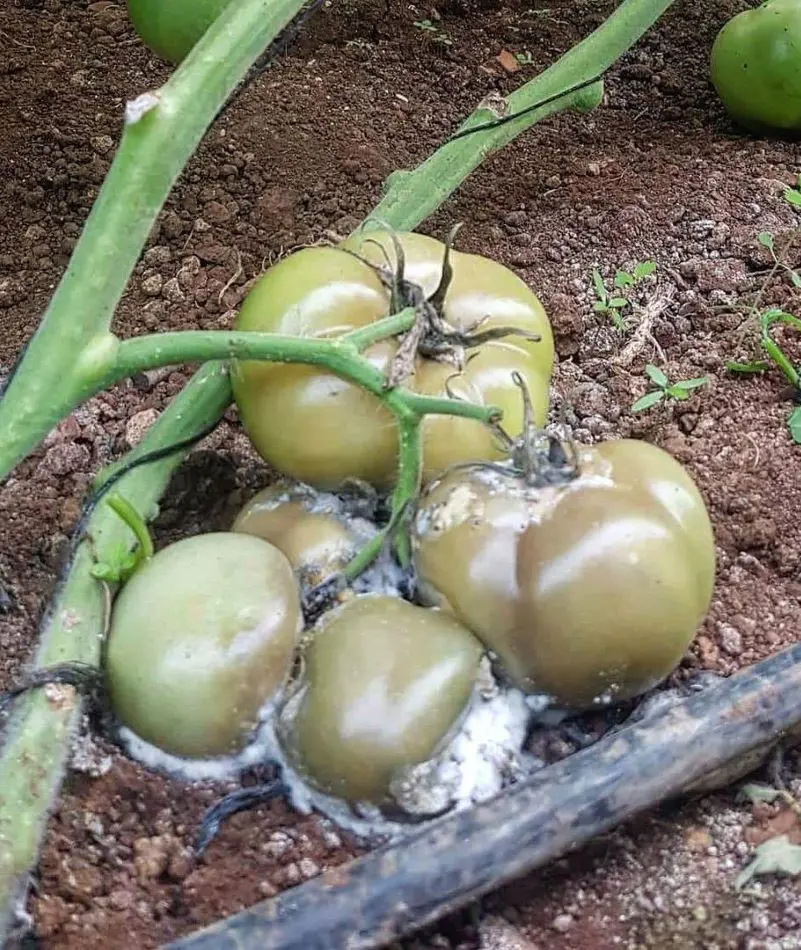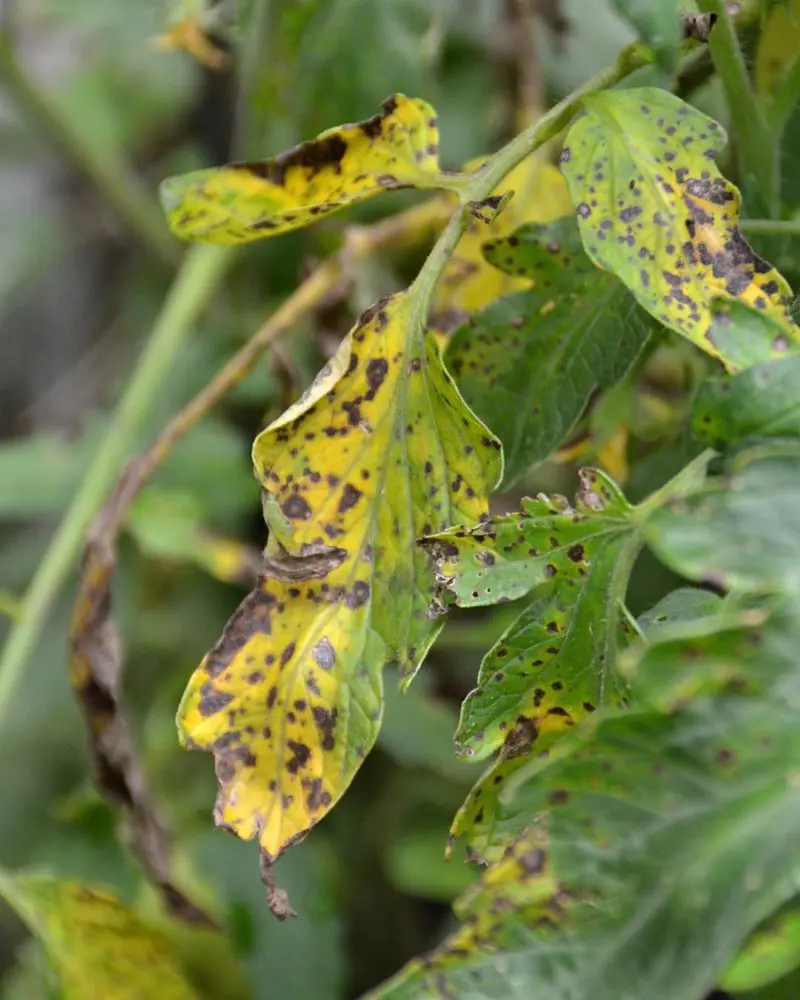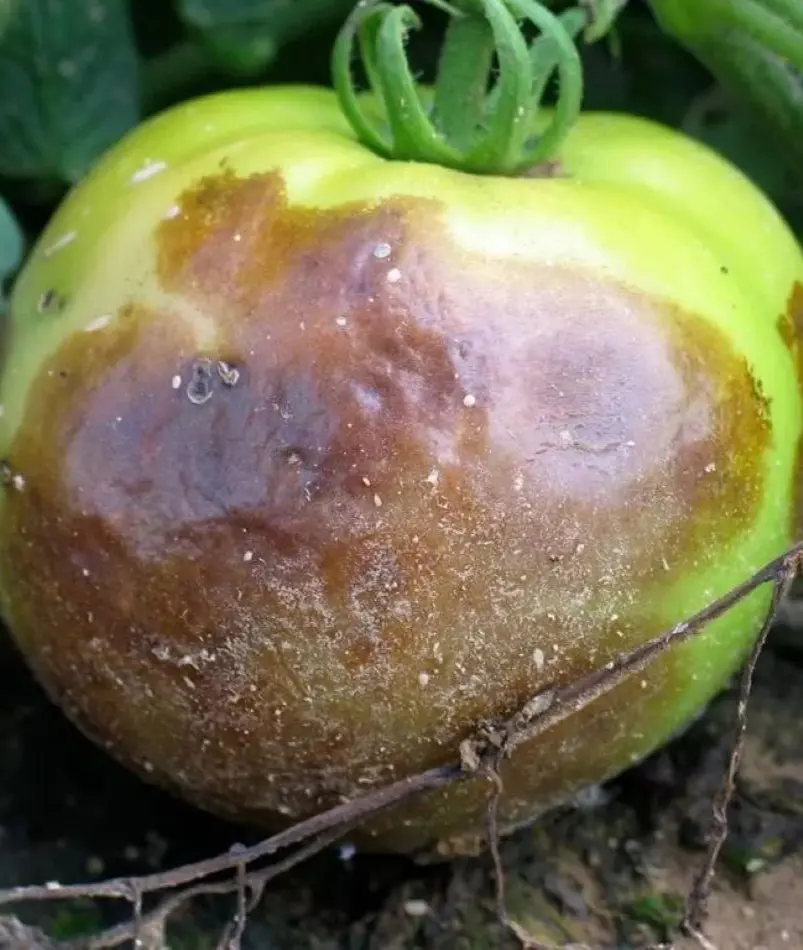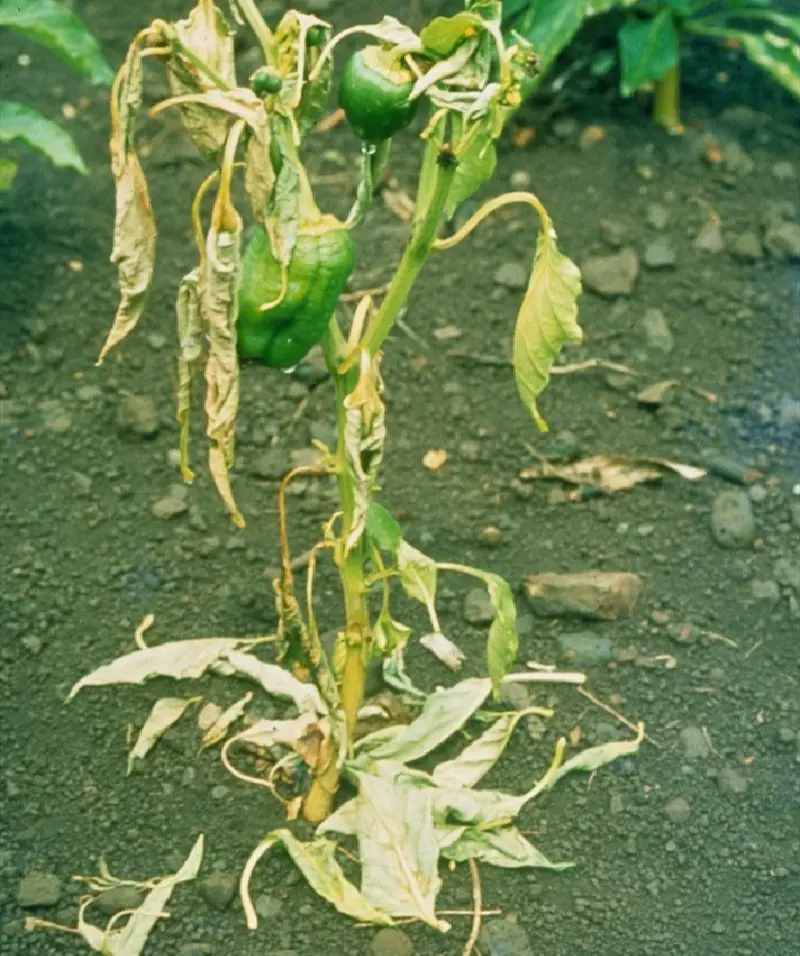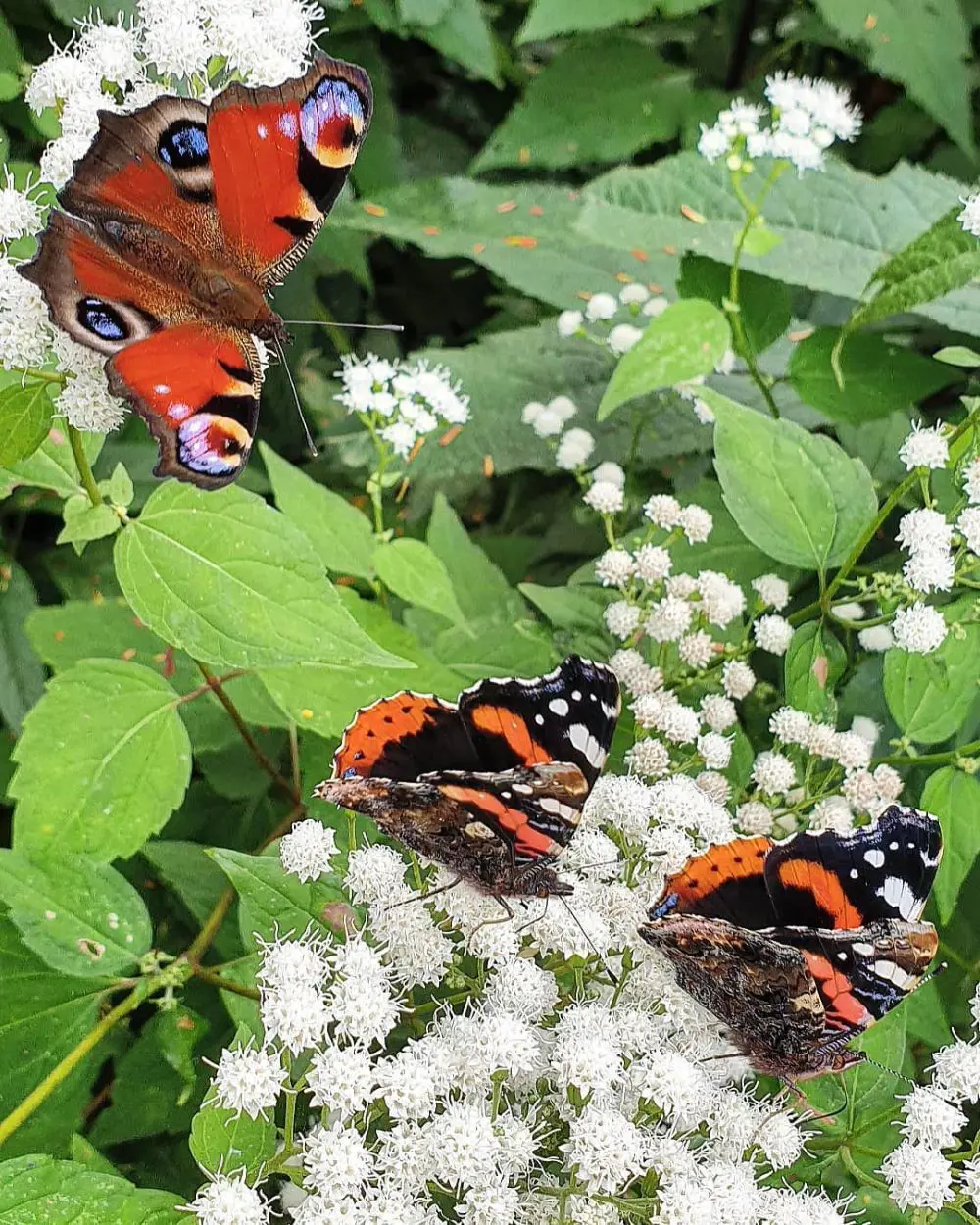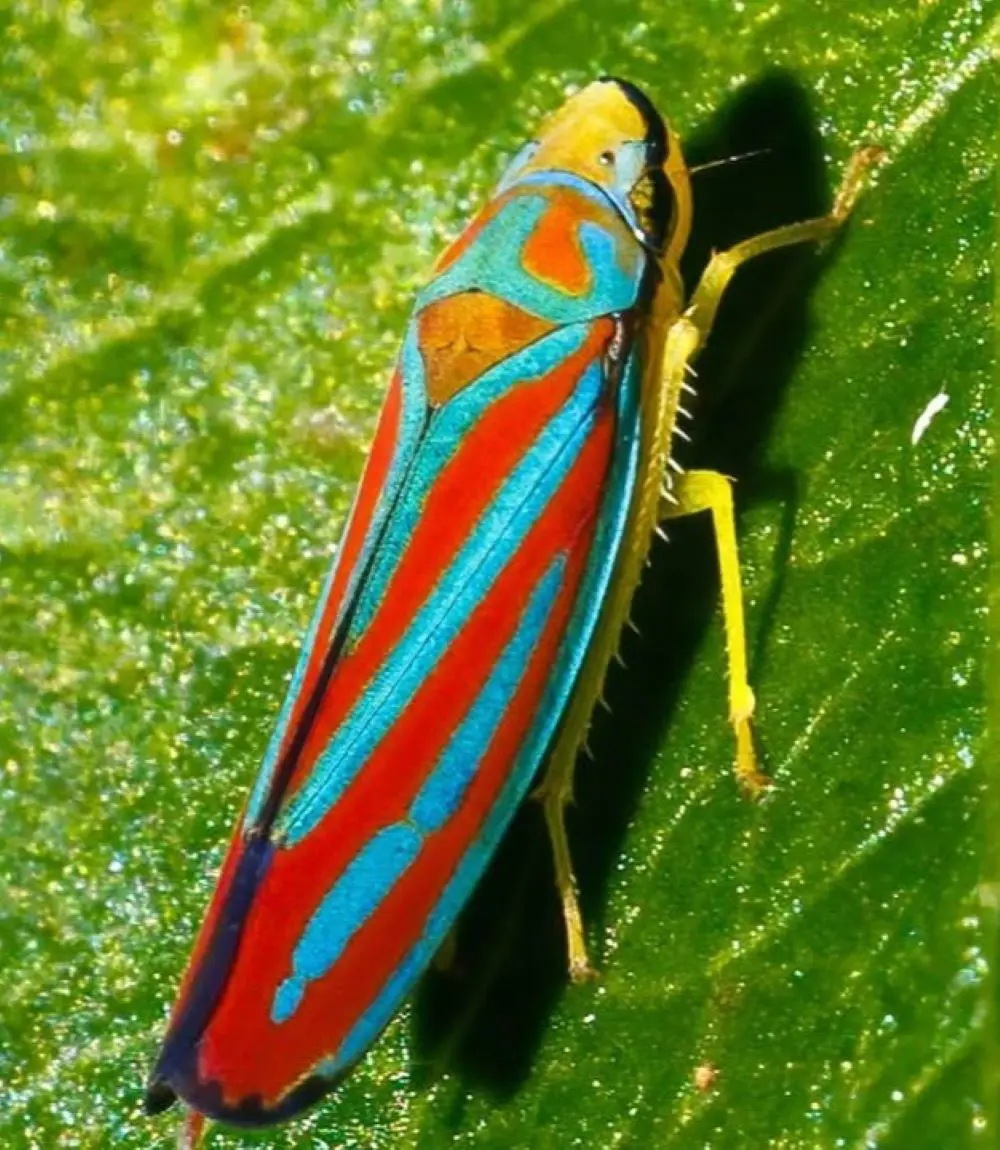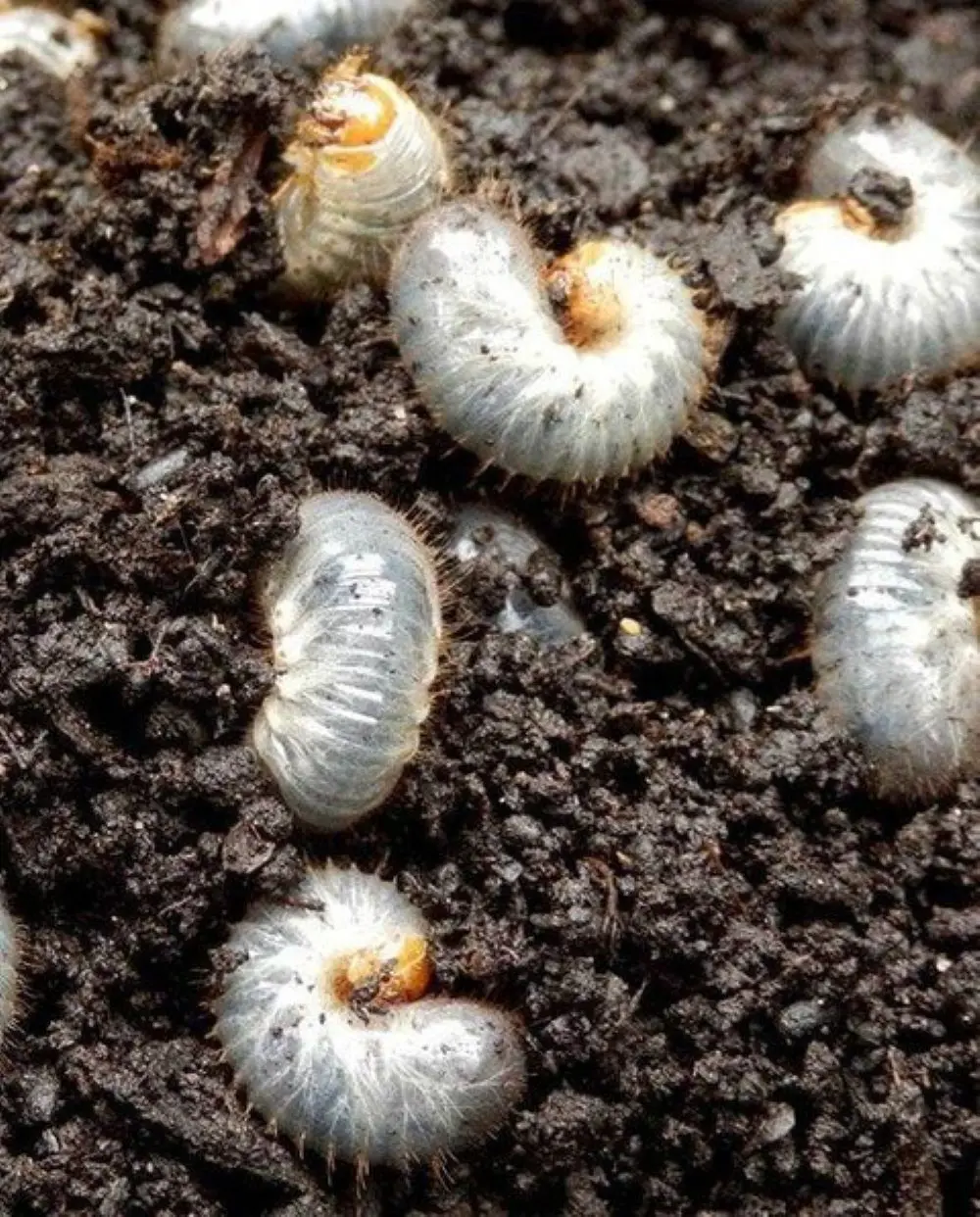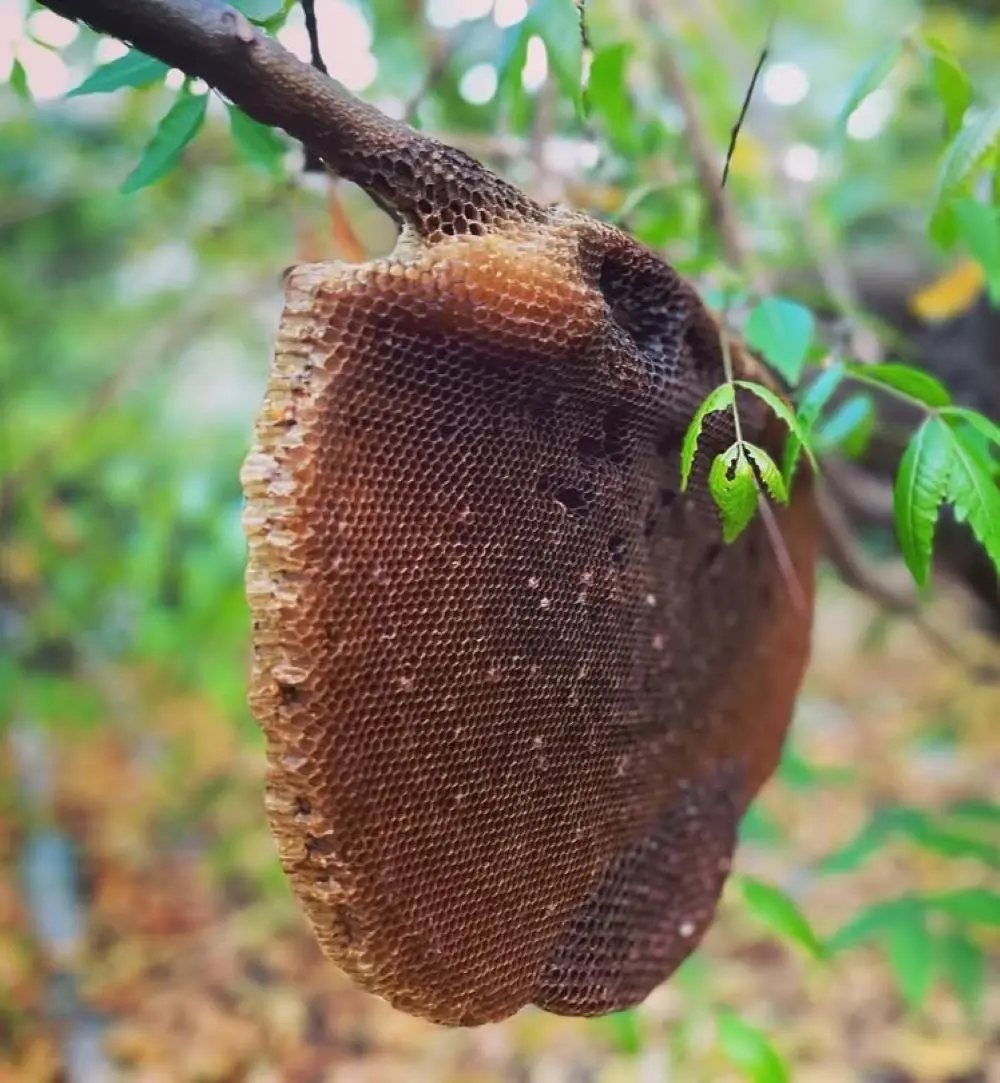1. Anthracnose
Anthracnose is a prevalent fungal infection that leads to fruit decay. It is caused by the fungus Colletotrichum coccodes, it thrives in warm, wet conditions and poorly drained soil. The fungus typically spreads to the fruit from the soil through water splashes.
Identification
You will notice small, round, sunken spots on the fruit that are water-soaked and expand into larger areas with a darker, often blackened center and a concentric ring pattern.
Leaves may have small, round spots with yellow halos around them. The infection usually begins on immature fruit, but symptoms only appear as they ripen.
Treatment
Apply a tomato fungicide to the entire crop at the first signs of infection. Also, use copper-based fungicides before the disease appears. These fungicides help create a protective barrier on the plants.
